Every January, Collins Dictionary selects its top ten words and phrases of the
preceding year. Among the publisher’s picks for 2021 was ‘hybrid working’. Most
talented professionals would agree it was a great choice. Pre-pandemic, 90% of the
world traveled into the office every day, whereas now the very idea seems like
something from a bygone age.
But it would be wrong to see this change as merely the result of COVID.
Rather, the virus was a catalyst. What actually enabled the upheaval in our working
habits was two converging sets of opinions.
Our recent whitepaper Is Hybrid Working demonstrated that men are far more likely than women to want to work fully remotely.
Firstly, there was an increasingly vocal group of (mostly younger) professionals
who were demanding more flexible forms of working. This was the same prescient
generation who made much of the early running on such ideas as corporate
purpose, sustainability and work/life balance. But their preference for working from
home was often seen as a step too far.
Secondly, there was a group of (mostly older) professionals who were finally
persuaded that remote working needn’t mean a drop in productivity. Indeed, many
of these senior leaders were pleasantly surprised to discover other benefits to
working from home. They got to spend more time with their kids, for example, and
they didn’t have to dress up in a suit every day.
With both these cohorts finally in agreement, the brave new world of WFH was
upon us.
Also, check out our Executive Solutions here.
But as the memory of COVID recedes, it’s worth checking on whether sentiment
has changed at all. How are those younger professionals enjoying working from
their bedrooms? Are they as enthusiastic as ever or is it a case of careful what you
wish for? Alternatively, are the managerial community having second thoughts?
What is the data saying about productivity? And what is the impact on training,
mentoring, team cohesion and workplace culture?
We spoke to over 100 professionals across all sectors, asking them for their
thoughts on remote working and measuring whether these aligned with those of
their employers.
The results seem to suggest we’ve arrived at a delicate balance between what
workers want and what employers are willing to provide. Nevertheless, certain
tensions are also apparent.
Also, check out our Article Don’t Worry, Be Happy here.
Fig. 1: Current & preferred working arrangements (All)
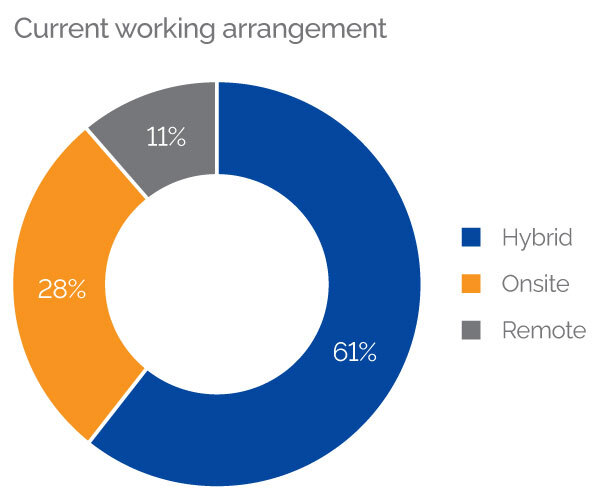
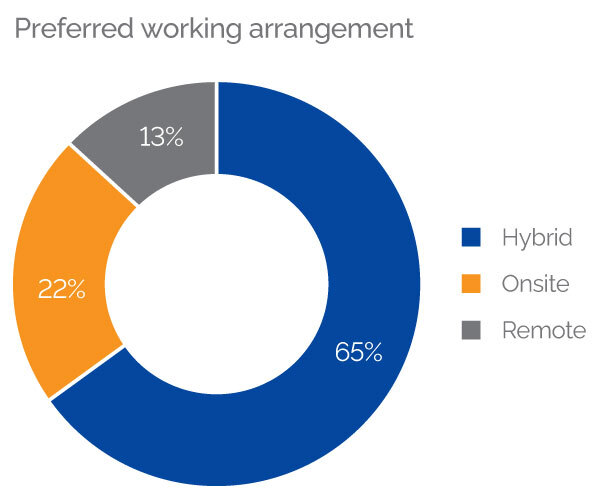
Know what is Candidate Experience and What Companies Get Wrong!
As Figures 1 illustrates, 61% of our sample group are currently working to a hybrid
arrangement – that is, some days they go into the office and other days they don’t.
This accords impressively with the same group’s actual preference, with 65% saying
hybrid working is their favored option.
This prompts an obvious question: what do the other 35% prefer – fully remote or
fully onsite? Here, we see some surprising results. Most eye-catchingly, only 13%
of people want to be fully remote. Admittedly, this is still more than those who are
actually remote (11%) but it still shows that the vast majority place considerable
value on onsite or hybrid working. We can also confirm that many of the remote
working enthusiasts were in the tech sector, often performing contract roles of
relatively short duration. It makes sense that these people would place less value
on getting to know colleagues and contributing to a specific workplace culture.
Our complete “Resources from Industry Experts” is now available here.
Conversely, when we quizzed the 87% on why they disliked the idea of fully remote
working they tended to mention the same points: the importance of building
relationships with colleagues; the opportunity to benefit from formal training; or
simply the enjoyment that comes with being part of a shared enterprise.
In fact, so important are these notions in some people’s minds that they would
actually prefer to be in the office every day of the week. Nearly a quarter (22%) of
our sample group said they favoured this arrangement – a far higher percentage
than we would have expected, albeit lower than the number who are actually
working fully onsite.
We also thought it might be interesting to filter our results by gender. Much of
the great work that companies are doing around diversity focuses on workplace
experience, so it is important to understand what sort of workplace women and
men prefer. Is it an office or a coffee table? What we discovered was that males
and females are closely aligned in their overall preference for hybrid working, but
surprisingly far apart when it comes to the costs and benefits of remote working.
Read our new article on Who Cares Wins here.
Fig. 2: Current & preferred working arrangements (Women)
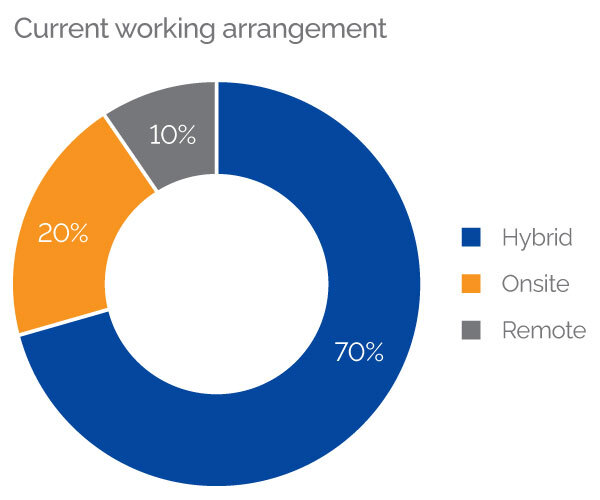
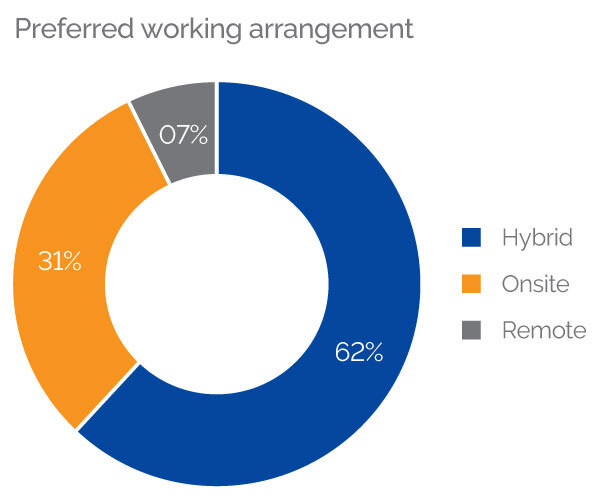
Fig. 3: Current & preferred working arrangements (Men)
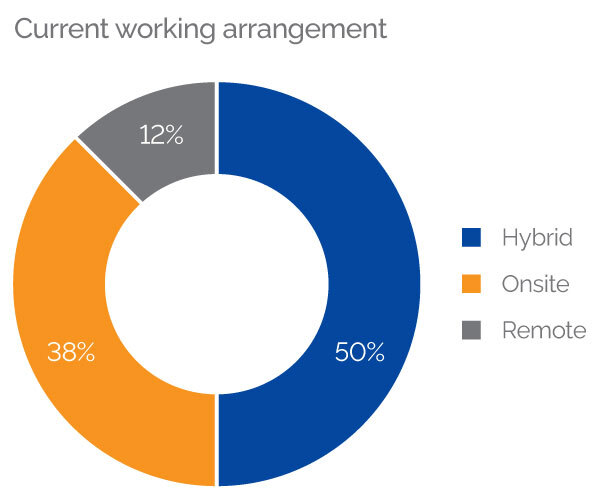
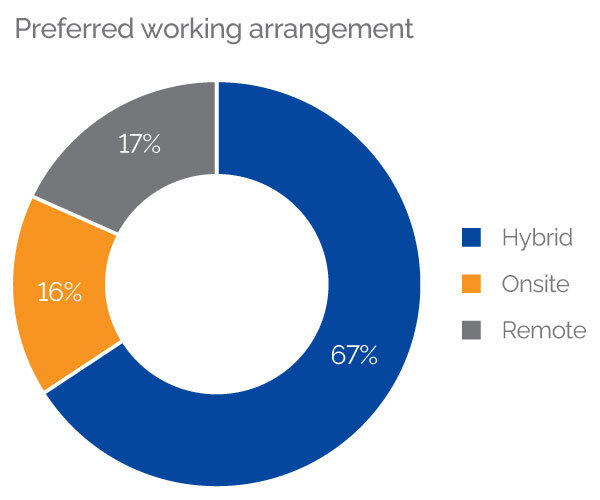
Let’s take hybrid working first. We saw in our overall statistics that this was the
preferred setup for most (65%) of our sources. This aligns closely with the result for
both men (67%) and women (62%). However, while 17% of male sources said they’d
be happy to work fully remote, only 7% of females said this would be their preferred
option.
This being the case, it is not surprising that we also see a wide disparity between
men and women when it comes to fully onsite working. Here, the tables are turned,
with 31% of women stating this as their preference but only 16% of men saying the
same.
Check out our Quarterly Published The WhiteCrow Whisper to help you with Recruitment here.
This has implications not just for recruiters but also for professionals engaged
in work around inclusivity and corporate culture. What is driving this disparity
between men and women when it comes to workplace preferences? Do females
attach more value to building relationships with colleagues? Are men less team spirited or are they just more likely to enjoy working on their own? Obviously, we
are wandering into the realm of speculation here, but the questions are surely
pertinent. If we agree that some industries suffer from a lack of gender diversity,
it appears we may be compounding the problem by allowing the practice of fully
remote working to become more established.
And what of the future? We spoke earlier of productivity and the widely held
concern that this might be depressed by allowing people to work from home. The
consensus now seems to be that this was an unfounded fear, but is the evidence
really in on this point? True, OECD figures show that the most productive countries are not necessarily those with the longest working week – Luxembourg, for
example, is far more productive than Greece, but has an average working week
of 29 hours compared to Greece’s 39.1 hours.
But our focus in this paper is not so much upon the numbers of hours worked as where they are worked from. It may take another few years of hybrid and remote working before we see the full effect on output per capita.
Then, of course, there will be new developments which further complicate the
picture. One work-related concept which is gaining increasing traction is the four day week. This was famously derided as a “crackpot idea” by Boris Johnson, but
some companies claim to have adopted it without any noticeable drop in output.
If the practice catches on more widely, what effect will this have on workplace
preferences? If you’re coming into the office three days a week now, will you drop to
just two days? If so, how is that going to land with your employer? But if not, you’re
suddenly spending 75% of your time in the office – probably not what you signed
up for when you agreed to hybrid working.
Also, check out our Resources for Employers for Recruitment here.
To summarize, the great majority of workers enjoy hybrid working. This is also what
the majority of employers provide. So far so good. But there are also reasonably
large numbers of people who’d prefer to work from home five days a week.
The majority of these are men. By contrast, significant percentages of female
workers would be happy to work fully onsite. These findings show that the global
workplace’s seemingly placid ‘new normal’ is shot through with a delicate network
of tensions. It is only the companies who understand – and carefully address –
these tensions that will thrive in our post-COVID world.
